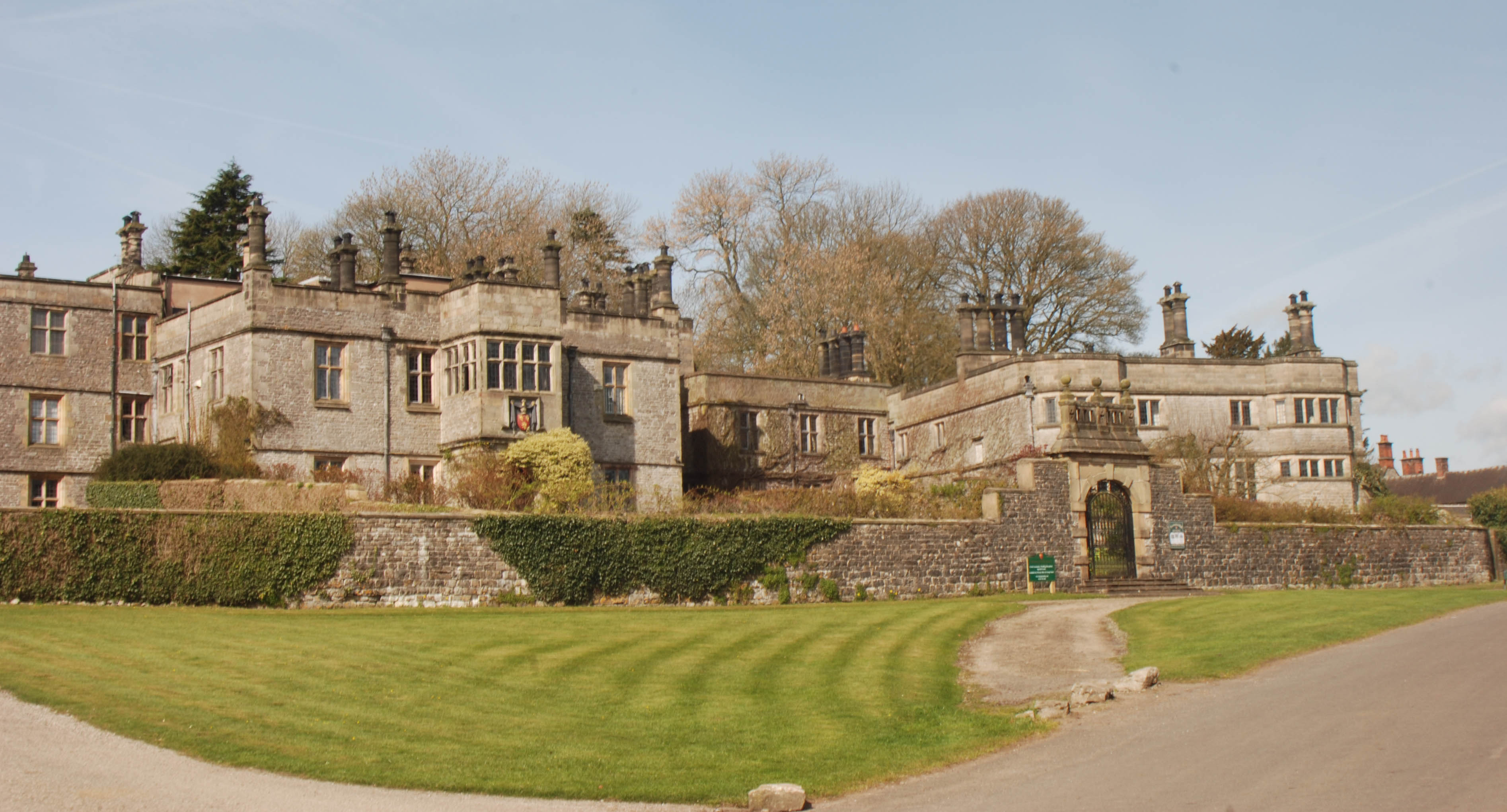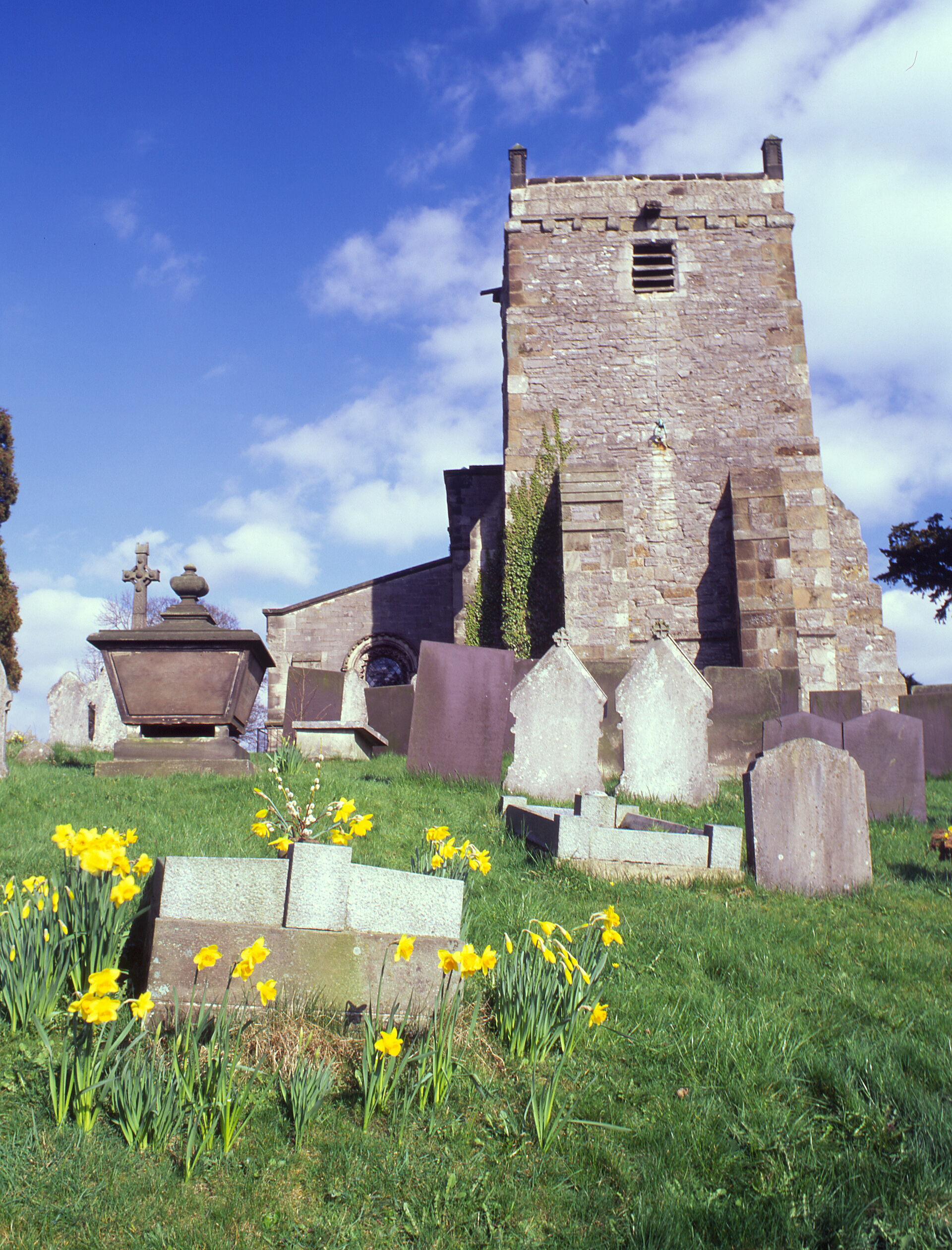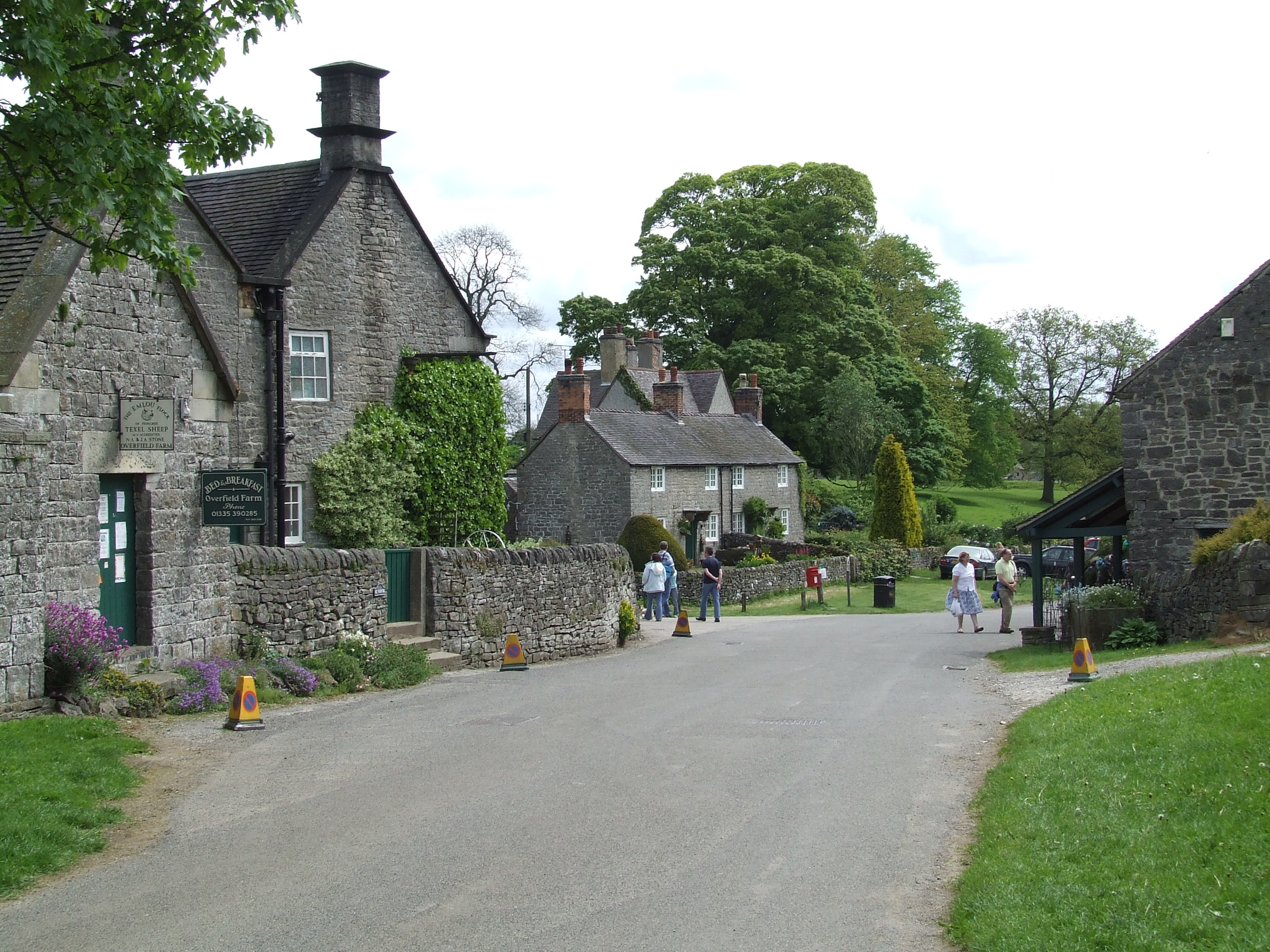Tissington on:
[Wikipedia]
[Google]
[Amazon]
Tissington is a village in the


 In the centre of the village is Tissington Hall, the seat of the FitzHerberts. A Jacobean building built in 1609 by Francis FitzHerbert, replacing an earlier moated manor house, it is a Grade II*
In the centre of the village is Tissington Hall, the seat of the FitzHerberts. A Jacobean building built in 1609 by Francis FitzHerbert, replacing an earlier moated manor house, it is a Grade II*

IGEW
- Wilson, John Marius (1870)
Tissington Hall & Fitzherbert family websiteTissington - Peak District On Line
{{authority control Villages in Derbyshire Towns and villages of the Peak District Tourist attractions of the Peak District Derbyshire Dales
Derbyshire Dales
Derbyshire Dales ( ) is a local government district in Derbyshire, England. The population at the 2011 Census was 71,116. Much of it is in the Peak District, although most of its population lies along the River Derwent.
The borough borders ...
district of Derbyshire
Derbyshire ( ) is a ceremonial county in the East Midlands, England. It includes much of the Peak District National Park, the southern end of the Pennine range of hills and part of the National Forest. It borders Greater Manchester to the nor ...
, England. The appropriate civil parish
In England, a civil parish is a type of administrative parish used for local government. It is a territorial designation which is the lowest tier of local government below districts and counties, or their combined form, the unitary authorit ...
is called Tissington and Lea Hall. The population of this parish at the 2011 census was 159. It is part of the estate of Tissington Hall, owned by the FitzHerbert family since 1465. It is a popular tourist attraction, particularly during its well dressing
Well dressing, also known as well flowering, is a tradition practised in some parts of rural England in which wells, springs and other water sources are decorated with designs created from flower petals. The custom is most closely associated with ...
week. It also gives its name to the Tissington Trail
The Tissington Trail is a bridleway, footpath and cycleway in Derbyshire, England, along part of the trackbed of the former railway line connecting Ashbourne to Buxton. It takes its name from the village of Tissington, which it skirts. Open ...
, a walk and cycle path which passes nearby. The Limestone Way
The Limestone Way is a waymarked long-distance footpath in Derbyshire, England. It runs for through the White Peak of the Peak District National Park, from Castleton south to Rocester over the county boundary into Staffordshire. The trail is ...
, another long-distance path and bridleway
A bridle path, also bridleway, equestrian trail, horse riding path, ride, bridle road, or horse trail, is a trail or a thoroughfare that is used by people riding horses, riding on horses. Trails originally created for use by horses often now s ...
, passes through the village itself.
History
Tissington (Old English
Old English (, ), or Anglo-Saxon, is the earliest recorded form of the English language, spoken in England and southern and eastern Scotland in the early Middle Ages. It was brought to Great Britain by Anglo-Saxon settlers in the mid-5th ...
"Tidsige's farm/settlement") is recorded in the Domesday Book
Domesday Book () – the Middle English spelling of "Doomsday Book" – is a manuscript record of the "Great Survey" of much of England and parts of Wales completed in 1086 by order of King William I, known as William the Conqueror. The manusc ...
of 1086 as ''Tizinctun'', having been given to Henry de Ferrers
Henry de Ferrers (died by 1100), magnate and administrator, was a Norman who after the 1066 Norman conquest was awarded extensive lands in England.
Origins
He was the eldest son of Vauquelin de Ferrers and in about 1040 inherited his father's ...
Henry was given a large number of manors throughout England, but particularly in Derbyshire. by the King
King is the title given to a male monarch in a variety of contexts. The female equivalent is queen regnant, queen, which title is also given to the queen consort, consort of a king.
*In the context of prehistory, antiquity and contempora ...
:
"In Tizinctun Ulchel, Edric, Ganel, Uluiet, Wictric, Leuric, Godwin had 4 carucates of land forDuring the reign ofgeld Geld may refer to: * Gelding, equine castration * Danegeld Danegeld (; "Danish tax", literally "Dane yield" or tribute) was a tax raised to pay tribute or protection money to the Viking raiders to save a land from being ravaged. It was call .... Land for 4 ploughs. Now in the demesne there (are) 3 ploughs: and 12 villanes, and 8bordars Serfdom was the status of many peasants under feudalism, specifically relating to manorialism, and similar systems. It was a condition of debt bondage and indentured servitude with similarities to and differences from slavery, which developed ...having 4 ploughs, and 1 mill of 3 shillings (value); and of meadow. Underwood in length and 4 furlongs in breadth. In the time of King Edward it was worth £4, now 40 shillings"
Henry I Henry I may refer to:
876–1366
* Henry I the Fowler, King of Germany (876–936)
* Henry I, Duke of Bavaria (died 955)
* Henry I of Austria, Margrave of Austria (died 1018)
* Henry I of France (1008–1060)
* Henry I the Long, Margrave of the N ...
the estate passed to the Savage family. After the death of the last male heir, William le Savage in 1259 it was split between the families of the joint heiresses, the Meynells and Edensors. The Meynell's part of the estate was acquired in marriage by Nicholas FitzHerbert in the 1460s. During the reign of Elizabeth I
Elizabeth I (7 September 153324 March 1603) was Queen of England and Ireland from 17 November 1558 until her death in 1603. Elizabeth was the last of the five House of Tudor monarchs and is sometimes referred to as the "Virgin Queen".
Eli ...
, Francis, the great-grandson of Nicholas, purchased the remainder from the heirs of Edensors. From then the village and estate has been wholly in the ownership of the FitzHerbert family.
During the Civil War
A civil war or intrastate war is a war between organized groups within the same state (or country).
The aim of one side may be to take control of the country or a region, to achieve independence for a region, or to change government polici ...
a redoubt or siegework was constructed on the hill north of the church. The buried and earthwork remains are protected as a Scheduled Monument. Tissington Hall was garrisoned for the King
King is the title given to a male monarch in a variety of contexts. The female equivalent is queen regnant, queen, which title is also given to the queen consort, consort of a king.
*In the context of prehistory, antiquity and contempora ...
by its owner, Colonel Fitzherbert
in December 1643.
As of March 2021, and since 1989, the owner of the village was Sir Richard FitzHerbert, 9th Baronet
Sir Richard Ranulph FitzHerbert, 9th Baronet (born 2 November 1963), is a British landowner and holds the FitzHerbert baronetcy, which he inherited in 1989 along with the family home, Tissington Hall, on the death of his uncle, Sir John FitzHer ...
who resides at Tissington Hall. In an interview, he said that 45 of the properties were rented out and that tenants farmed the 2,000 acres around the Hall which operates some corporate events and weddings.
Notable buildings


listed building
In the United Kingdom, a listed building or listed structure is one that has been placed on one of the four statutory lists maintained by Historic England in England, Historic Environment Scotland in Scotland, in Wales, and the Northern I ...
. The owner was awarded the Bledisloe Gold Medal "for estate management by the Royal Agricultural Society" in 2006.
The parish church of St Mary opposite the hall has a Norman tower
A tower is a tall structure, taller than it is wide, often by a significant factor. Towers are distinguished from masts by their lack of guy-wires and are therefore, along with tall buildings, self-supporting structures.
Towers are specific ...
and font
In metal typesetting, a font is a particular size, weight and style of a typeface. Each font is a matched set of type, with a piece (a " sort") for each glyph. A typeface consists of a range of such fonts that shared an overall design.
In mo ...
.
The majority of the other buildings in the village are built in the local vernacular
A vernacular or vernacular language is in contrast with a "standard language". It refers to the language or dialect that is spoken by people that are inhabiting a particular country or region. The vernacular is typically the native language, n ...
style, of which around 70% are listed buildings.
Well dressings
An estimated 50,000 people visit the village to view itswell dressing
Well dressing, also known as well flowering, is a tradition practised in some parts of rural England in which wells, springs and other water sources are decorated with designs created from flower petals. The custom is most closely associated with ...
s each year. Six wells (Children's Well, Coffin Well, Hall Well, Hands Well, Town Well and Yew Tree Well) are decorated during the week of Ascension Sunday with pictures formed by pressing flower petals and other organic materials into a clay substrate. The pictures are usually on a Biblical
The Bible (from Koine Greek , , 'the books') is a collection of religious texts or scriptures that are held to be sacred in Christianity, Judaism, Samaritanism, and many other religions. The Bible is an anthologya compilation of texts of ...
theme reflecting current events or anniversaries. This tradition is often cited to date back at least to 1348, following the village’s escape from the Black Death
The Black Death (also known as the Pestilence, the Great Mortality or the Plague) was a bubonic plague pandemic occurring in Western Eurasia and North Africa from 1346 to 1353. It is the most fatal pandemic recorded in human history, causi ...
, which the villagers attributed to the purity of the water in its wells.

Literary connections
Richard Graves
Richard Graves (4 May 1715 – 23 November 1804) was an English cleric, poet, and novelist. He is remembered especially for his picaresque novel ''The Spiritual Quixote'' (1773).
Early life
Graves was born at Mickleton Manor, Mickleton, Glouce ...
wrote some of his novel ''The Spiritual Quixote'' whilst staying in Tissington.- Wilson, John Marius (1870)
Imperial Gazetteer of England and Wales
The ''Imperial Gazetteer of England and Wales'' is a substantial topographical dictionary first published between 1870 and 1872, edited by the Reverend John Marius Wilson. It contains a detailed description of England and Wales. Its six volumes ...
See also
* Listed buildings in Tissington and Lea HallReferences
External links
Tissington Hall & Fitzherbert family website
{{authority control Villages in Derbyshire Towns and villages of the Peak District Tourist attractions of the Peak District Derbyshire Dales